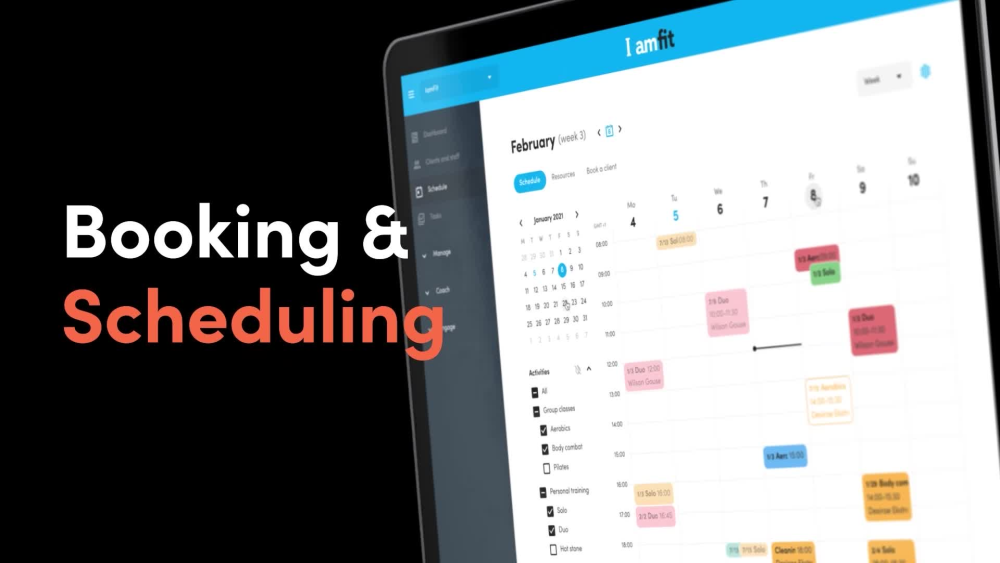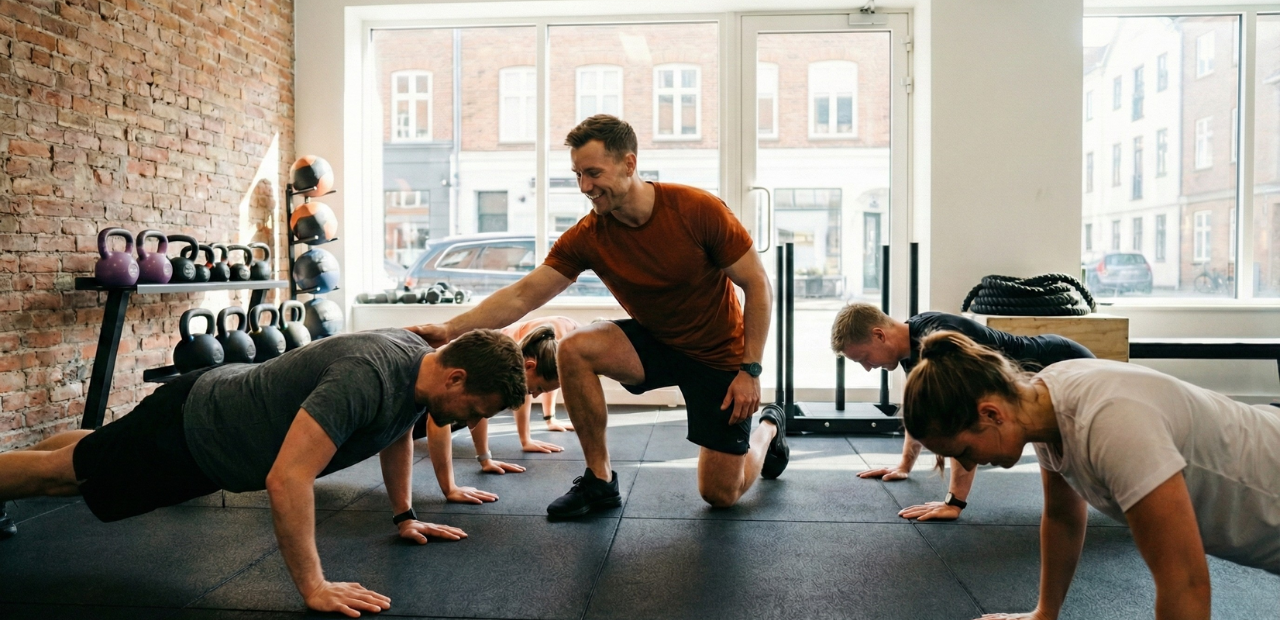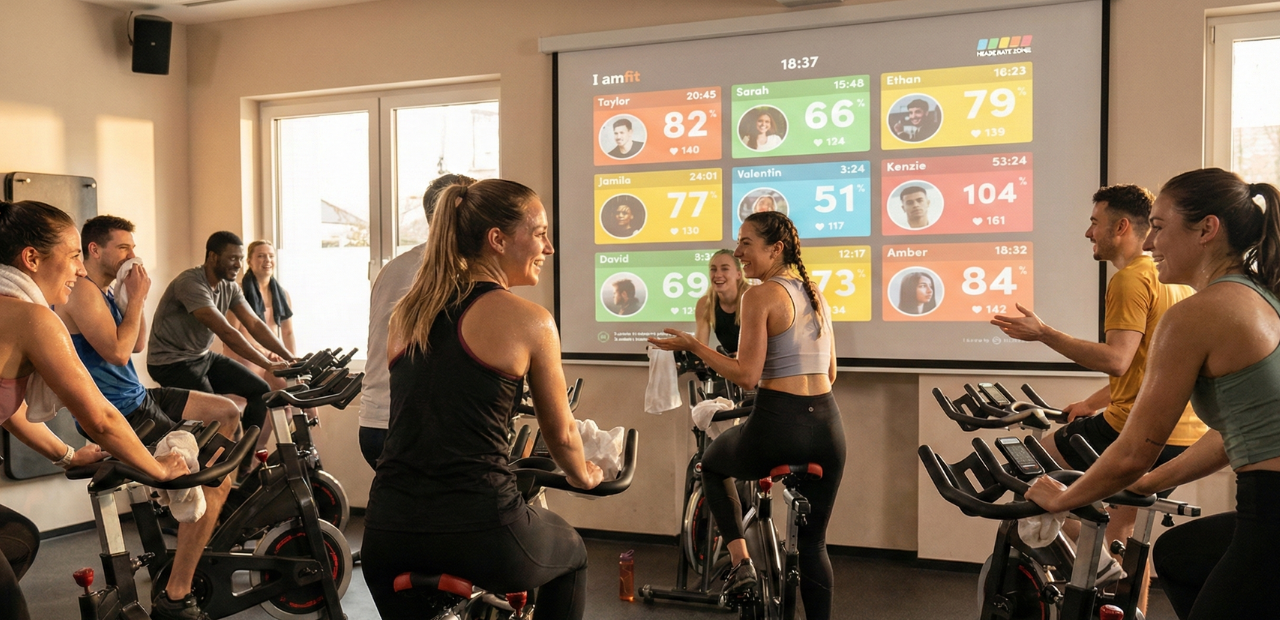Ever dreamt of turning your passion for fitness into a full-blown business? It’s an exciting journey, but like any start-up, it comes with its share of costs.
Whether you’re imagining a calm studio space or a high-tech gym setup, understanding the financial side is a must.
For all you personal trainers out there considering this big leap, let’s dive into the costs of opening a personal training business.
Certifications and Training

Before you even think about starting your own personal training business you have to get certified as a personal trainer yourself.
Certifications from a reputable organization are a testament to your expertise, commitment, and credibility in the fitness industry.
They assure clients of your competence and dedication to their health and well-being.
Here’s a detailed breakdown of the costs associated with certifications and training:
Initial Certification
Most reputable personal training certifications require candidates to pass an exam.
Some of the leading organizations offering certifications include the
- American Council on Exercise (ACE)
- National Academy of Sports Medicine (NASM)
- International Sports Sciences Association (ISSA)
The cost for these certifications can range from $400 to $1000, which usually includes study materials, practice tests, and the exam fee.
Specialized Certifications
Beyond the basic personal training certification, you can opt for specialized certifications in areas like nutrition, group fitness, senior fitness, or athletic conditioning.
These specialized certifications can provide an edge in the market and allow for diversified service offerings.
Costs can range from $200 to $1,000, depending on the specialization and the certifying organization.
Recertification
Most personal training certifications require renewal every 1-2 years. This makes sure that you stay updated with the latest industry trends and research.
Recertification often requires completing a certain number of continuing education units (CEUs) and paying a renewal fee.
The costs for recertification can range from $50 to $200, excluding any additional costs for CEU courses.
Continuing Education
To maintain certification and keep up with the latest knowledge, you may also need to enroll in workshops, seminars, and courses.
These can cover a wide range of topics, from new workout techniques to client psychology.
The costs for these educational opportunities can vary widely, from $50 for a local workshop to $500 or more for multi-day conferences or specialized courses.
CPR and First Aid Certification
Most certifying bodies require personal trainers to have a valid CPR and First Aid certification.
This keeps you prepared to handle emergencies during training sessions.
Getting these certifications typically costs between $50 to $150 and requires periodic renewal.
Regulatory Costs
Understanding the regulatory landscape is important before you start jotting down your personal training business plan.
Keeping up with local, state, and federal regulations not only avoids potential legal complications but also establishes the credibility and legitimacy of a successful personal training business.
Here’s a detailed breakdown of the regulatory costs involved:
- Business License: Before operating, every personal training business needs a business license and a business bank account. This license legitimizes your business in the eyes of the government and varies based on location and the size of the business. The cost can range from $50 - $550 annually, depending on the municipality or state.
- Permits: Depending on the location and nature of your personal training business, you might need specific permits. For instance, if you play music during training sessions, you might need a music license. If you sell supplements or snacks, a health permit might be required. The cost of these permits can vary widely, from $25 to $500 each.
- Zoning and Land Use Permits: If you’re opening a physical location, you must find out if the property is zoned for fitness or commercial use. Acquiring or changing a zoning permit can cost anywhere from $100 to $2,000, depending on the locality.
- Incorporation Fees: If you decide to incorporate your business, there are fees associated with filing the necessary paperwork. Whether you choose to be an LLC, S-Corp, or other entity, the costs can range from $100 to $800, excluding any legal consultation fees.
- DBA (Doing Business As) Registration: If you’re operating under a name different from your legal business name, you’ll need to register a DBA. This cost can range from $10 to $100, depending on the state.
- Health and Safety Inspections: Depending on your location, periodic health and safety inspections might be mandatory. While some municipalities offer free inspections, others might charge fees ranging from $50 to $250.
Insurance Needs

Insurance is a critical part of any personal training business. It safeguards you against potential risks and liabilities.
Having the right personal training insurance can protect both your business and your clients.
Here’s a detailed breakdown of the insurance needs and their associated costs:
Professional Liability Insurance
This type of insurance, also known as errors and omissions insurance, protects personal trainers from claims related to the advice or training they provide.
If a client alleges that they were injured due to your training or guidance, this insurance can cover legal fees and potential settlements.
Costs can range from $500 - $1000 annually, depending on coverage limits and deductibles.
General Liability Insurance
This covers bodily injuries or property damage that might occur on your business premises.
For instance, if a client slips and falls or if their belongings get damaged, this insurance can cover the associated costs. Premiums typically range from $300 to $1,000 annually.
Product Liability Insurance
If you sell fitness products, supplements, or equipment, this insurance protects against claims of defects or injuries caused by these products.
Costs can vary based on the products sold but typically range from $500 to $1,500 annually.
Business Insurance
This covers damage to or loss of business property, including equipment, furniture, and even the physical space (if owned).
Whether due to theft, fire, or other disasters, this insurance can help replace or repair damaged items. Premiums can range from $500 to $2,500 annually, depending on the property’s value and location.
Workers’ Compensation Insurance
If you have employees, most states require workers’ compensation insurance.
This covers medical expenses and lost wages if an employee gets injured on the job.
Premiums depend on the number of employees and the nature of their work, with costs ranging from $500 to $5,000 annually.
Cyber Liability Insurance
If you operate an online personal training business or store client information digitally, this insurance protects against data breaches or cyberattacks.
It can cover notification costs, legal fees, and even public relations efforts after a breach.
Premiums can range from $250 to $1,500 annually, depending on the amount of stored data and the business’s digital footprint.
Health Insurance
If you’re self-employed, you’ll need to consider health insurance for yourself and potentially for your employees.
Costs can vary widely based on coverage levels and geographic location, with premiums ranging from $300 to $1,000 per month.
Leasing and Infrastructure

Depending on how you approach your business. You may need to buy or rent a place to train your personal training clients.
The location, ambiance, and functionality of the space can influence client acquisition and retention.
Here’s a breakdown of the costs associated with leasing and infrastructure:
Location Selection
The cost of leasing space varies dramatically based on location. Prime areas in urban centers will command higher rents than suburban or rural areas.
It’s essential to balance accessibility for clients with affordability.
Monthly rents can range from $1,000 in less central areas to over $10,000 in prime urban locations.
Size and Layout
The size of the space you lease will directly impact the cost.
While a larger space can accommodate more clients simultaneously, it also comes with a higher price tag.
Additionally, the layout matters; open floor plans might be more suitable for group sessions, while segmented spaces might be better for one-on-one training.
Costs can vary from $10 to $50 per square foot annually, depending on the location and the building’s amenities.
Lease Duration
Longer lease terms might offer discounted rates but can also lock you into a location.
It’s essential to negotiate terms that provide some flexibility, especially if you anticipate business growth or relocation.
Renovation and Setup
Once you’ve secured a space, it might require renovations to suit the needs of a personal training business.
This could include installing mirrors, laying down specialized flooring, or setting up partitions.
Renovation costs can range from $5,000 to $50,000 or more, depending on the extent of the changes.
Utility
Monthly utility bills, including electricity, water, and heating, are recurring costs.
Depending on the size of the space and the equipment used, utility bills can range from $100 to $1,000 or more per month.
Internet and Communication
A reliable internet connection is a must for managing bookings, client communications, and possibly streaming online sessions.
High-speed internet packages can range from $50 to $200 per month. Additionally, a business phone line might cost $30 to $100 monthly.
Security
Ensuring the safety of your space and equipment is vital. This might involve installing security cameras, access control systems, and alarms.
Initial setup for a security system can range from $500 to $5,000, with monthly monitoring fees of $20 to $100.
Maintenance
Regular maintenance, such as HVAC servicing, plumbing repairs, and general upkeep, is essential to provide a comfortable environment for clients.
Annual maintenance costs can range from $500 to $5,000, depending on the age and condition of the facility.
Equipment and Tools

If you are training your clients to build muscle or lose weight, they need to be training with weights and other equipment which requires an investment in different types of machines and tools.
Here’s a detailed breakdown:
Resistance Bands
These are versatile tools used for strength training and flexibility exercises.
They come in various resistance levels, allowing for progression as clients become stronger.
Depending on the quality and brand, a set of resistance bands can cost between $10 to $100.
Cardiovascular Machines
Treadmills, ellipticals, and stationary bikes are staples in a personal training studio.
They provide clients with warm-up and cardio workout options.
The cost can vary based on the brand and features. For instance, a basic treadmill can start at $500, while high-end models can go up to $5,000 or more.
Free Weights
Dumbbells, barbells, and kettlebells are essential for strength training.
The cost depends on the weight and material.
A set of dumbbells can range from $50 to $500, while barbell sets can range from $100 to $1,000.
Functional Training Equipment
Tools like medicine balls, stability balls, and plyometric boxes are used for functional workouts, targeting multiple muscle groups.
These can cost anywhere from $20 for a basic medicine ball to $300 for a set of plyometric boxes.
Yoga and Stretching Mats
Essential for floor exercises, stretching, and yoga sessions. Depending on the thickness and material, mats can range from $10 to $100.
Studio Furniture
This includes seating for clients, storage units for equipment, and possibly a reception desk.
The cost can vary based on the quality and design, with basic furniture setups starting at $500 and going up to $5,000 for more luxurious setups.
Maintenance Equipment
Cleaning supplies, toolkits for equipment repair, and sanitation products ensure a hygienic and safe environment for clients.
These recurring costs can add up to $50 to $200 monthly, depending on the size of the facility and frequency of use.
Software and Technology

If you are not tech-savvy, you might be at a disadvantage in comparison to your competitors.
From client management to marketing, the right tools can streamline processes and enhance the client experience.
Here’s a breakdown of the costs associated with software and technology:
Scheduling and Booking Software
This software allows clients to book sessions, view available slots, and even reschedule or cancel appointments.
Some popular options include Virtuagym, MindBody, Acuity, and Booksy.
Costs can range from $15 to $200 per month, depending on the number of features and the size of the client base.
Customer Relationship Management (CRM) Software
CRMs help manage client information, track their progress, and maintain communication.
Tools like Salesforce, HubSpot, or Zoho can be tailored for personal training businesses.
Monthly fees can range from $10 to $300, based on the number of users and features.
Billing and Payment Processing
Software like Square, Stripe, or PayPal can handle client payments, generate invoices, and track revenue.
While some platforms offer free basic services, they typically charge a percentage (around 2.5% to 3.5%) per transaction.
Monthly subscription models with additional features can range from $20 to $100.
Website Development and Hosting
A professional website is essential for online visibility.
Platforms like Wix, Squarespace, or WordPress offer templates and hosting services.
Costs can vary from $5 to $50 per month for hosting, with additional charges for domain registration and premium features.
Online Training Platforms
If offering online personal training services, using a well-rounded coaching software allows you to send clients workout plans, and videos, and track their progress.
Subscription costs can range from $20 to $100 per month.
Marketing and Email Automation
Tools like Mailchimp, Constant Contact, or ActiveCampaign help automate email campaigns, manage subscriber lists, and analyze campaign performance.
Monthly fees can range from $10 to $200, depending on the size of the subscriber list and features.
Social Media Management
Platforms like Hootsuite, Buffer, or Sprout Social allow businesses to schedule posts, engage with followers, and analyze social media performance across various platforms.
Monthly subscriptions can range from $15 to $150.
Fitness and Nutrition Apps
Integrating with apps like MyFitnessPal or Fitbit can enhance the client experience by tracking nutrition, steps, or sleep.
While many apps are free for basic use, premium versions or business integrations can cost $10 to $50 per month.
Cloud Storage and Backup
Storing client data, workout plans, and business documents securely is crucial.
Services like Dropbox, Google Drive, or Microsoft OneDrive offer cloud storage solutions.
Costs can range from $2 to $20 per month, based on storage needs.
Video Conferencing Tools
For virtual training sessions or consultations, tools like Zoom, Skype, or Microsoft Teams are essential.
While basic versions might be free, business versions with added features can range from $5 to $50 per user per month.
Marketing and Branding

Marketing and branding are the lifeblood of any business, especially in the competitive world of personal training.
Effective marketing not only attracts new clients but also retains existing ones, but it comes with its own set of costs.
Here’s a detailed breakdown of the costs associated with marketing and branding:
Branding Development
This encompasses logo design, color schemes, and overall brand identity.
Hiring a professional graphic designer or agency can cost anywhere from $500 to $5,000, depending on the complexity and reputation of the designer.
Website Design and SEO
A professional, user-friendly website is crucial for online visibility. Costs can range from $1,000 to $10,000, depending on the complexity, features, and the designer’s expertise.
Additionally, search engine optimization (SEO) services to improve website ranking can cost between $300 to $1,500 per month.
Social Media Advertising
Platforms like Facebook, Instagram, and LinkedIn offer targeted advertising options.
Depending on the target audience and campaign duration, daily ad budgets can range from $5 to $500 or more.
Print Advertising
This includes brochures, flyers, business cards, and local magazine or newspaper ads. Design and printing costs can range from $100 for basic flyers to $5,000 for a full-page magazine ad.
Content Marketing
Regularly posting fitness content such as blog posts, videos, and infographics can position your personal training business as an industry expert.
Hiring content creators or videographers can cost anywhere from $20 to $500 per piece, depending on the content’s quality and length.
Email Marketing Campaigns
Platforms like Mailchimp or Constant Contact allow for targeted email campaigns. While basic plans might be free, premium features can cost between $10 to $200 per month.
Other Miscellaneous Costs
- Promotional Events: Hosting workshops, webinars, or open-house events can attract potential clients. Venue, equipment, and promotional material costs can range from $500 to $5,000 per event.
- Merchandising: Branded merchandise like t-shirts, water bottles, or gym bags can serve as both promotional items and additional revenue streams. Depending on the product and quantity, costs can range from $5 to $50 per item.
- Loyalty Programs: Implementing loyalty or referral programs can incentivize clients to bring in new business. While the cost of rewards might vary, setting up and managing such programs can range from $100 to $1,000 annually.
Labor and Staffing

While this doesnt apply to all personal trainers.
It depends on how well you are doing and if you decide to expand your personal trainer business by hiring trainers that will work for you.
If you do decide to go this route, here’s a detailed breakdown of the costs associated with labor and staffing:
Certified Personal Trainers
The primary assets of any personal training business. Their salaries can vary based on experience, certifications, and location.
On average, personal trainers can earn anywhere from $20 to $100 per hour, with those having specialized skills or a significant client base commanding higher rates.
Administrative Staff
These individuals manage bookings, handle client inquiries, and oversee day-to-day operations.
Salaries for administrative roles can range from $30,000 to $50,000 annually, depending on experience and responsibilities.
Support Staff
This category includes janitorial staff, maintenance personnel, and any other roles that support the business’s smooth functioning.
Their wages can vary based on the region and specific duties, typically ranging from $10 to $20 per hour.
Hiring Costs
Before bringing staff on board, there are costs associated with the hiring process.
This includes job postings (which can cost $50 to $500 per listing), background checks (around $20 to $50 per candidate), and potentially recruitment agency fees (which can take up to 20% of the hired candidate’s annual salary).
Training and Development
Continual professional development ensures that your team remains updated with the latest fitness trends and techniques.
Workshops, courses, and certifications can cost anywhere from $100 to $1,000 per employee annually.
Employee Benefits
Offering benefits like health insurance, retirement plans, or paid time off can attract and retain quality staff.
Depending on the benefits package, this can add an additional 20% to 40% on top of the base salaries.
Employee Turnover Costs
The fitness industry can sometimes see high turnover rates. When an employee leaves, there are costs associated with finding a replacement, training them, and potential lost revenue during the transition.
While hard to quantify precisely, it’s estimated that replacing an employee can cost anywhere from 50% to 200% of their annual salary.
Contractors vs. Full-time Employees
Some personal training businesses opt to hire trainers as independent contractors rather than full-time employees.
This can save on benefits and other associated costs but comes with its own set of regulatory considerations. It’s essential to consult with legal counsel to ensure compliance.
Conclusion
As you can see, opening a personal training business needs a lot of initial investments, ongoing expenses, and potential unforeseen costs.
However, if you stick with it and give your clients the results they are looking for, you can not only recover these costs but also earn substantial profits.
The success of your business is not solely hinged upon the costs involved but more importantly, your ability to consistently offer superior value to your clients.
Starting your fitness business may be financially demanding, but the potential rewards and the chance to turn your passion into a profession can make it an incredibly rewarding journey.
FAQ
How profitable is being a personal trainer?
Being a personal trainer can make you a decent income with no upper limit on how much you can make. According to the Bureau of Labor Statistics, the median annual salary for personal trainers in the United States is $45,380.
The profitability of a personal trainer can also depend on:
- Experience and qualifications
- Working in a high-income area
- Building a large clientele
- Offering additional services, such as nutrition counseling, weight loss programs, and personal training packages
Is it hard to start a personal training business?
Yes. Starting a personal training business is hard because it requires dedication, investment, and expertise. But with a solid business plan and effective marketing, it’s achievable.
Can I start my own business as a personal trainer?
Yes, you can start your own business as a personal trainer. Many trainers operate independently, offering services in clients’ homes, online, or in rented gym spaces.
How much should I charge for a personal training plan?
Charges for a personal training plan vary based on location, trainer’s experience, and plan complexity. On average, personal trainers charge between $20 to $100 per hour, with specialized or comprehensive plans costing more.




